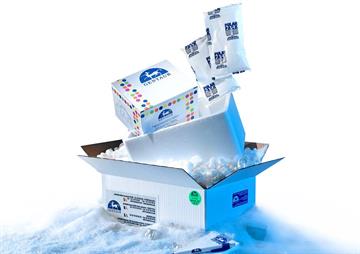Anti-Mouse PDGFR-beta Antibody

Anti-Mouse PDGFR-beta Antibody
748.5 EUR
In Stock
quantity
Produktdetaljer
Katalognummer: 209 - 103-M44
Produktkategori: Företag och industri > Vetenskap och laboratorium
ReliaTechGentaur
Storlek: 100 µg
Related Products
103-M44
Anti-Mouse PDGFR-beta Antibody
The platelet-derived growth factor (PDGF) family consists of proteins derived from four genes (PDGF-A, B, C, and D) that form disulfidelinked homodimers (PDGF-AA, BB, CC, and DD) and a heterodimer (PDGF-AB). These proteins regulate diverse cellular functions by binding to and inducing the homo- or heterodimerization of two receptors (PDGF Rα and Rβ). Whereas α/α homodimerization is induced by PDGF-AA, BB, CC, and AB, α/β heterodimerization is induced by PDGF-AB, -BB, CC, and DD, and β/β homodimerization is induced only by PDGF-BB, and DD. Both PDGF-Rα and -Rβ are members of the class III subfamily of receptor tyrosine kinases (RTK) that also includes the receptors for MCSF, SCF and Flt3-ligand. All class III RTKs are characterized by the presence of five immunoglobulin-like domains in their extracellular region and a split kinase domain in their intracellular region. Ligand-induced receptor dimerization results in autophosphorylation in trans resulting in the activation of several intracellular signaling pathways that can lead to cell proliferation, cell survival, cytoskeletal rearrangement, and cell migration. Many cell types, including fibroblasts and smooth muscle cells, express both the α and β receptors. Others have only the α receptors (oligodendrocyte progenitor cells, mesothelial cells, liver sinusoidal endothelial cells, astrocytes, platelets and megakaryocytes) or only the β receptors (myoblasts, capillary endothelial cells, pericytes, T cells, myeloid hematopoietic cells and macrophages). A soluble PDGF Rα has been detected in normal human plasma and serum as well as in the conditioned medium of the human osteosarcoma cell line MG63. Both the recombinant mouse and human soluble PDGF Rα bind PDGF with high affinity and are potent PDGF antagonists.
748.5 €
103-M43
Anti-Mouse PDGFR-alpha Antibody
The platelet-derived growth factor (PDGF) family consists of proteins derived from four genes (PDGFA, B, C, and D) that form disulfide-linked homodimers (PDGFAA, BB, CC, and DD) and a heterodimer (PDGFAB). These proteins regulate diverse cellular functions by binding to and inducing the homoor heterodimerization of two receptors (PDGF Rα and Rβ). Whereas α/α homodimerization is induced by PDGF-AA, BB, CC, and AB, α/β heterodimerization is induced by PDGF-AB, BB, CC, and DD, and β/β homodimerization is induced only by PDGF-BB and DD. Both PDGF Rα and Rβ are members of the class III subfamily of receptor tyrosine kinases (RTK) that also includes the receptors for MCSF, SCF, and Flt3 ligand. All class III RTKs are characterized by the presence of five immunoglobulinlike domains in their extracellular region and a split kinase domain in their intracellular region. Ligand-iinduced receptor dimerization results in autophosphorylation in trans resulting in the activation of several intracellular signaling pathways that can lead to cell proliferation, cell survival, cytoskeletal rearrangement, and cell migration. Many cell types, including fibroblasts and smooth muscle cells, express both the α and β receptors. Others have only the α receptors (oligodendrocyte progenitor cells, mesothelial cells, liver sinusoidal endothelial cells, astrocytes, platelets, and megakaryocytes) or only the β receptors (myoblasts, capillary endothelial cells, pericytes, T cells, myeloid hematopoietic cells, and macrophages). Recombinant mouse and human soluble PDGF Rβ bind PDGF with high affinity and are potent PDGF antagonists.
748.5 €
Håll dig uppdaterad! Visa tidigare publikationer

By: Author , 2 Comment
Pneumokocker – vad är det som angriper våra barn?
30 August 2025

By: Author , 2 Comment
Anaplasmos hos hundar och katter – allt du behöver veta
23 August 2025

By: Author , 2 Comment
Solbränna – hur leker man säkert i solen?
16 August 2025

By: Author , 2 Comment
Stroke – viktig information
8 August 2025








